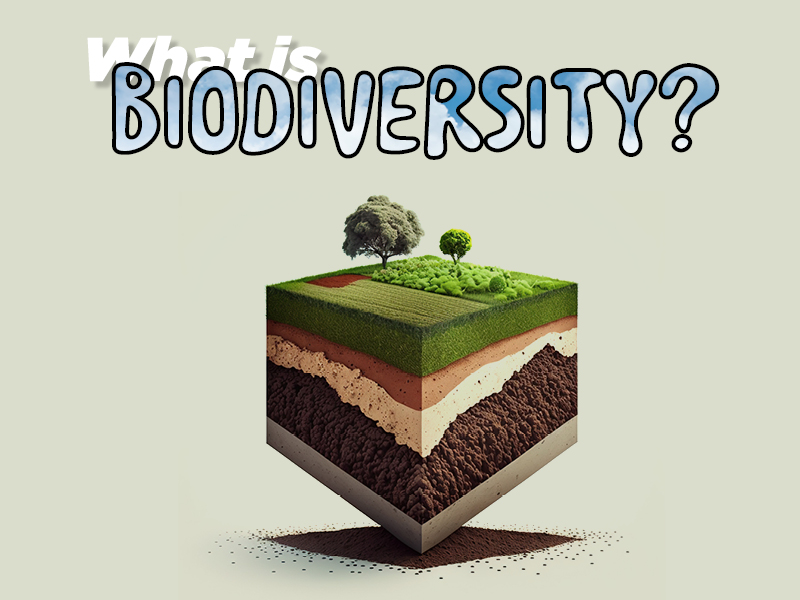
This word is often bandied around without much thought for what it really means. To try and understand what biodiversity is, let’s look at what it isn’t. Modern farming has devolved into growing one variety of grass recommended by MAF. We used to have ‘meadows’, now it is all controlled ‘pasture’.
Throw in a copse or two of Pinus radiata and perhaps a hectare of avocados … and that is still just two forms of monoculture. What’s wrong with that? Well so called ‘weeds’ now become a big problem. If our end harvest is reduced to one or two things, everything else becomes a ‘weed’.
Then there is standardisation: all the same perfect size, blemish free, look good for months. Never mind the taste or the nutrient value, so long as the fruit looks shiny in the supermarket aisle or export box.
Kiwifruit is a classic example; all the export fruit has to be one size with perfect skin. Most people couldn’t care less how this comes about. Hi-Cane is the name of the acid they spray on the flowers of kiwifruit to force the buds to burst at the same time, so they all ripen together at the optimal size (active ingredient: hydrogen cyanamide). I guess that just makes it easier for the exporter?
A few birds and bees and school kids may die – never mind, we have identical fruit. So all the fruit we import has also been through some kind of unnatural process, with China-only-knows what kind of toxic chemical sprays.
The definition above says: ‘…usually considered to be important and desirable’. If you are lucky enough to live here on our Coromandel peninsula, you may just have enjoyed a walk in some of our subtropical indigenous rainforest or as most of us call it, ‘the bush’. If so, you may have noticed there are mosses, lichens, shrubs, flowers, trees, weta and huhu, plus a few birds and a multitude of other living organisms.
If you started to dig, you would find a deep layer of leaf mould, different worm varieties and natural compost; then stretching much deeper there is the microbiome, the fungal energetic network connecting all the bush together in ways we humans will
possibly never fully understand. Then there’s the wai, the water – you can hear it, smell it, sense it and feel it. The air is cool and sweet, easy to breathe, charged with negative ion molecules helping your blood and lymph flow freely.
If you are lucky enough to be near some of our truly ancient forest, you could also feel something else. I call it a feeling of antiquity, it comes from the energy of the forest being in balance from the deepest microbiome to the top of the tallest tree, with all that biodiversity in between. THIS IS WHERE OUR CLEAN AIR, WATER & CLIMATE REGULATION COMES FROM, so the definition of biodiversity should be changed to ‘essential and vital’. In her article ‘Preserving Mother Earth’ (Coromind, Feb 2023), Petra Campbell wrote about the role of worldviews influencing how we interact with nature. If you follow the socalled Western belief that humans are separate from all that is, you probably don’t realise that people too are very biodiverse.
We all have a role to play, a purpose. Only no one is going to tell you what that is; we all have to find it for ourselves and it has to do with how we experience joy. Diversity is ‘variety’ which is sometimes called the ‘spice of life’ and each one of us can contribute something that is unique and beautiful to the whole big picture. The corporate/governmental fear machine would have us scared of climate change, global warming, plastic bags, the other political party and each other. However, the world is still turning and while I still breathe, I plan to kill pine trees, make compost, and grow fruit, veg and meat, eat local seasonal organic food, and speak to others about finding their joy and embracing diversity.
We can all feel an unease with the state of our planet and the powers that be use reductionist, poverty thinking and fear to pretend to have solutions. It’s just carbon or it’s just Putin. NO! It’s infinitely more complicated than that – and yet paradoxically it’s also much simpler. If you know of a small patch of old growth bush, preserve, restore, regenerate it and teach our kids to do the same.
One last thing I’d like to share, by an ancient Indian sage that I have always considered most profound… This is that That is this
And that is all there is.
A big shout out with gratitude to Leo and Taylor for creating this awesome mag & the Altbays platform.
Words by Roger Harwood






